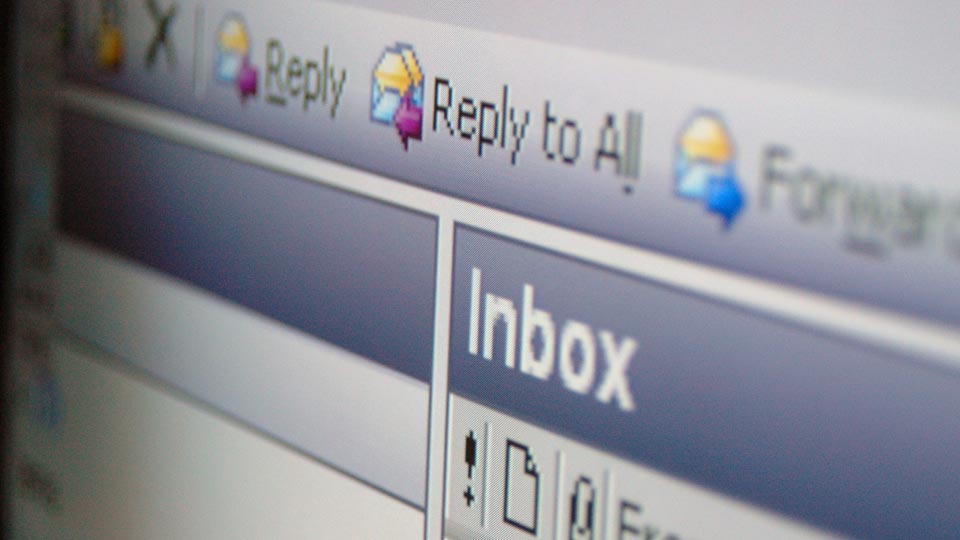Email Phishing
Email Phishing: The $3.3 Billion Threat Hiding Behind Every "Urgent" Message
Email phishing has evolved from obvious scams into sophisticated psychological warfare that costs Americans $3.3 billion annually. Today's phishing emails are virtually indistinguishable from legitimate messages—because criminals now use the same email templates, logos, and writing styles as real companies. They've graduated from "Dear Sir/Madam" to addressing you by name, referencing your actual recent purchases, and spoofing email addresses so perfectly that even security experts get fooled.
Consider this: 97% of people worldwide cannot identify a sophisticated phishing email, according to Intel Security. The 3% who can? They're usually cybersecurity professionals who spend years studying these attacks. For everyone else, including tech-savvy millennials and successful executives, phishing represents an invisible threat that strikes 1 in every 99 emails received.
The Shocking Truth About Who Gets Phished
Contrary to popular belief, millennials fall for phishing scams twice as often as seniors. Recent IBM research revealed that 35% of millennials have clicked phishing links, compared to just 18% of those over 55. Why? Younger users check email on phones while multitasking, making split-second decisions without scrutiny. Seniors, having heard warnings for years, approach suspicious emails with healthy skepticism.
The real vulnerability factors aren't age or intelligence—they're circumstance and timing:
Monday mornings: 38% higher click rates (people are rushed, catching up) After 4 PM: 41% higher success rate (decision fatigue sets in) Mobile devices: 3x more vulnerable (smaller screens hide red flags) During major events: 70% higher success (tax season, holidays, pandemics) First 30 days at new jobs: 5x more likely to fall victim (unfamiliar with company communications)
The Six-Layer Deception Model Criminals Use
Modern phishing operates through carefully orchestrated psychological manipulation:
Layer 1: The Impersonation Foundation
Criminals don't just copy logos anymore. They purchase expired domains from legitimate companies, hijack abandoned email accounts from real businesses, and use AI to analyze thousands of genuine emails to perfect their mimicry. They've learned that "amaz0n-security.com" gets caught, but "amazon-verification-usa.com" doesn't.
Layer 2: The Data Harvest
Before sending phishing emails, criminals already know:
- Your name, job title, and company (from LinkedIn)
- Recent purchases (from data breaches)
- Your interests and fears (from social media)
- Your contacts and relationships (from previous breaches)
- Your typical online behavior patterns (from tracking pixels)
This intelligence transforms generic phishing into "spear phishing"—targeted attacks mentioning your actual colleagues, real projects, or genuine transactions.
Layer 3: The Emotional Trigger Arsenal
Every phishing email weaponizes specific emotions:
Fear: "Suspicious activity detected on your account" Urgency: "Action required within 24 hours" Authority: "Court summons - Response required" Greed: "Unclaimed refund of $389.99" Curiosity: "You appeared in 5 searches this week" Compassion: "Help needed for disaster victims" Vanity: "You've been selected for an exclusive opportunity"
Layer 4: The Technical Smokescreen
Modern phishing employs sophisticated technical tricks:
- Homograph attacks: Using Cyrillic 'о' instead of Latin 'o' in URLs
- Subdomain spoofing: secure.amazon.phishing.com appears as "amazon" on mobile
- HTTPS certificates: 84% of phishing sites now show the "secure" padlock
- Email authentication bypass: Exploiting SPF/DKIM weaknesses to pass security checks
- Zero-day redirects: Links that appear safe when checked but redirect later
Layer 5: The Pressure Escalation
Phishing emails create cascading pressure through:
- Initial threat ("Your account shows suspicious activity")
- Consequence amplification ("All data will be permanently deleted")
- Time pressure ("You have 4 hours to respond")
- Social pressure ("This affects your entire team")
- Authority pressure ("Federal regulations require immediate action")
Layer 6: The Credential Harvest
The final layer captures everything:
- Login credentials (immediately tested across 50+ popular sites)
- Credit card details (sold on dark web within minutes)
- Social Security numbers (used for identity theft)
- Email access (to phish your contacts)
- Two-factor authentication codes (bypassed through real-time phishing proxies)
The Yahoo Mail Vulnerability Crisis
Yahoo Mail users face unique phishing risks due to platform-specific weaknesses:
The Bulk Folder Blindspot: Legitimate emails hidden in Yahoo's Bulk folder train users to check spam folders regularly, where sophisticated phishing emails wait alongside real messages.
Legacy Security: Yahoo's 2013 breach exposed 3 billion accounts. Many users never changed passwords, giving criminals permanent access to contact lists for targeted phishing.
Contact Harvesting: Yahoo's outdated contact system makes it trivial for criminals to extract entire address books, enabling "friend-to-friend" phishing where emails appear to come from trusted contacts.
Limited Warning Systems: While Gmail shows prominent security warnings, Yahoo's subtle notifications are easily missed, especially on mobile devices where 67% of phishing success occurs.
Real Phishing Attacks That Destroyed Lives
Case 1: The Construction Company: A controller received an email from her "CEO" requesting an urgent wire transfer for a confidential acquisition. The email used the CEO's actual writing style, referenced a real board meeting, and came during his vacation (mentioned on his real LinkedIn). Loss: $1.8 million, company bankrupted.
Case 2: The Retirement Theft: A retiree received an email from "Medicare" about updating payment information for continued coverage. The site looked identical to Medicare.gov, complete with correct account numbers from a previous breach. Loss: $387,000 life savings, suicide attempted.
Case 3: The School District: IT administrator received "Microsoft" notification about expiring licenses, clicked to renew, entered admin credentials. Ransomware encrypted entire district's systems during final exams. Cost: $2.3 million, academic year disrupted for 18,000 students.
Why Traditional Anti-Phishing Training Fails
Companies spend $3 billion annually on security awareness training, yet phishing success rates haven't decreased. Why? Because humans aren't debuggable:
- Cognitive overload: Employees receive 121 emails daily; careful inspection is impossible
- Habituation: After 1,000 legitimate urgent emails, the 1,001st phishing email succeeds
- Stress blindness: Personal or work stress reduces threat detection by 45%
- Update fatigue: Constant software updates train users to click through warnings
- Authority conditioning: Corporate culture teaches immediate compliance with executive requests
The SPAMaster Shield: Automated Intelligence Beats Human Fallibility
SPAMaster succeeds where human vigilance fails by analyzing patterns invisible to users:
Header Forensics: Examining 47 technical indicators in email headers that reveal spoofing attempts, including DKIM mismatches, SPF failures, and routing anomalies that sophisticated criminals can't fully disguise.
Behavioral Modeling: Learning your genuine contacts' communication patterns—when they email, how they write, what they discuss—to instantly flag impersonation attempts that would fool you.
Link Analysis: Checking not just where links claim to go, but where they actually redirect, through multiple hops, at the moment of clicking, catching zero-hour phishing sites before blacklists update.
Content Intelligence: Recognizing the subtle linguistic patterns that distinguish phishing from legitimate emails—urgency markers, authority invocations, and psychological triggers that criminals can't eliminate without reducing effectiveness.
Real-Time Learning: Adapting to new phishing techniques within hours, not weeks, because SPAMaster processes threats locally instead of waiting for cloud updates that arrive after damage occurs.
Don't wait until you become a statistic. Every day without proper protection is another opportunity for criminals to destroy everything you've built. Download SPAMaster's free trial today and join thousands who've made email phishing someone else's problem.
Download Your FREE 30-Day Trial!
Become Your Own Spam Master. Try It Now.
Contact
Connect with me if you would like to participate in the closed beta test of SPAMaster.
Erik Brown
Owner


